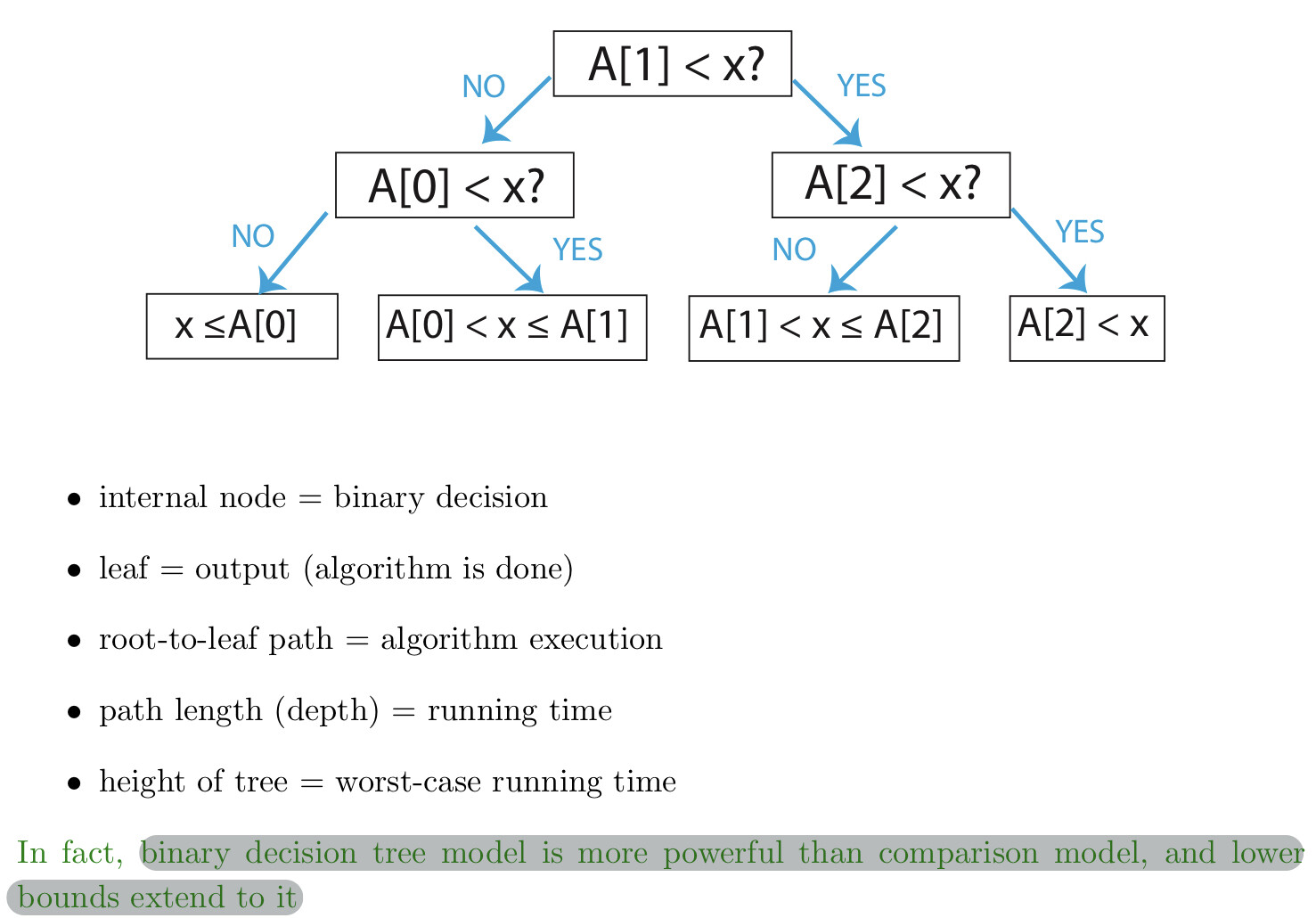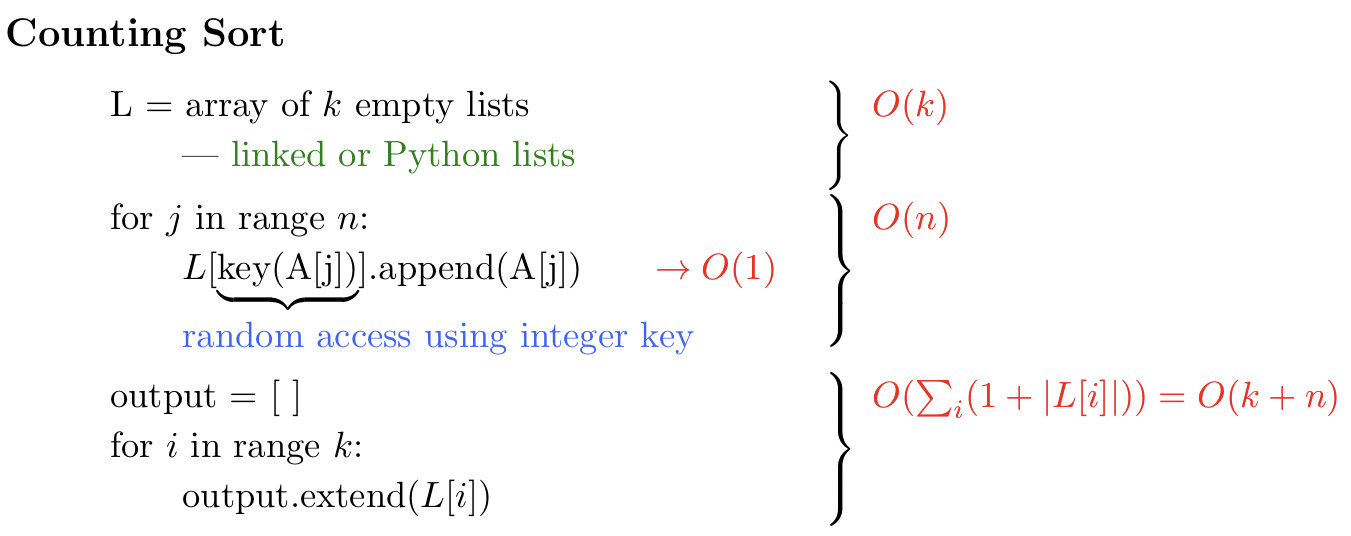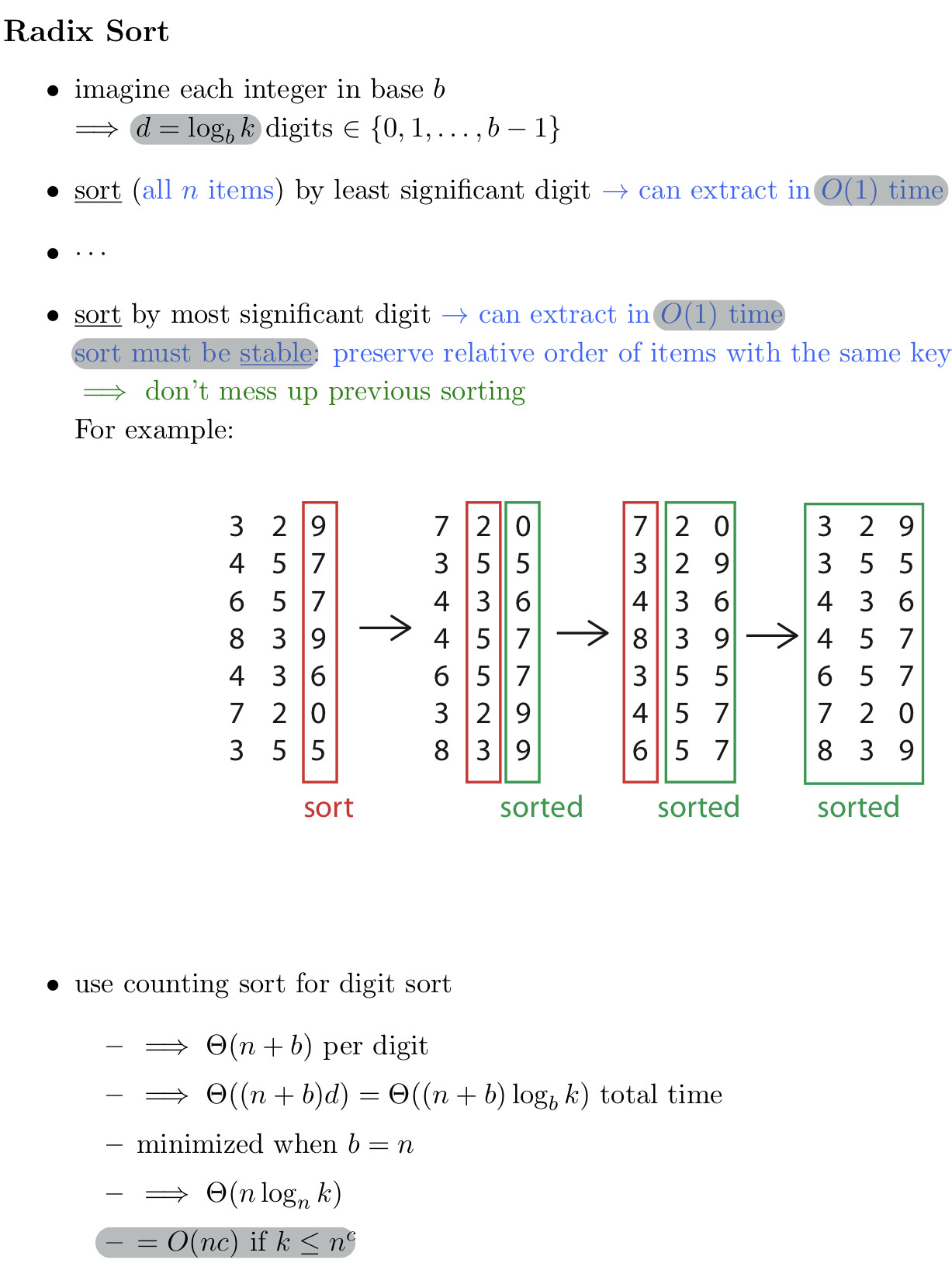Sorting Problems
Linear-Time Sorting Overview
- Comparison model
- Lower bounds in the comparison model
- searching: binary search, AVL tree search optimal
$$\Omega(lg n)$$ - sorting: merge sort, heap sort, AVL sort optimal
$$\Omega(n lg n)$$
- searching: binary search, AVL tree search optimal
- O(n) sorting algorithms for small integers
- counting sort
- radix sort
Comparison Model of Computation
- input items are ADTs
- only support comparisons(<,>,<=, etc)
- time cost =# comparisons
Decision Tree
Any comparison algorithm can be viewed/specified as a tree of all possible comparison outcomes&resulting output, for a particular n, e.g: n=3

Search Lower Bound
- # leaves >= # possible answers >=n
- decision tree is binary
- ==> height >= \(lgn_{+-\Theta(1)}\)
Sorting Lower bound
- leaf specifies as permutation: A[3]<=A[1]<=A[9]<=…
- all n! are possible answer
- # leaves >=n! ==> \(\\Omega(nlgn)\)
Linear-time Sorting
If n keys are integers, * ==> lower bounds do not apply * if $k=\mathrm{n}^{O(1)}$, can sort in O(n) time
Counting Sort
Time: \(\Theta(n+k)\); also \(\Theta(n+k)\) space

About Radix Soft

Source
https://ocw.mit.edu/courses/6-006-introduction-to-algorithms-fall-2011/pages/lecture-notes/